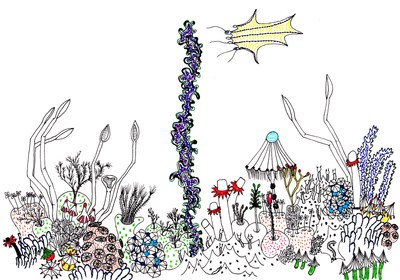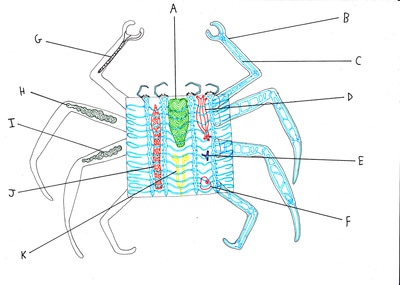|
Biofauna25 is the creator of not one, but two worlds, Epimethius and Odin. Either project has the potential to be a great book.
Epimethius is a larger, stormier version of Earth. There are at least four lineages of plants, including the ridge-leaves, the maze-roots, the feather plants, and the peeling plants. There are an incredible variety of radially-symmetrical animals, some resembling insects, crustaceans, mollusks, amphibians, and mammals. Variations on the theme include laterally flattened shrimp-like forms (making them bilaterally symmetrical) with their eyes on the back end. There are even more bilaterally-symmetrical animals. They have dual ribcages. The ventral ribs house the digestive organs and the dorsal ribs house the heart and respiratory organs. Many resemble fish and snakes. Others resemble deer or crocodiles. Some make silk, some retract their heads into hoods, and others have their simple mouths in the chest. My favorites are probably the frog-like potes. Odin is a small, relatively dry planet largely covered by inedible sheddings of red plants floating in the air. Different species of floating plants receive energy from sunlight, lightning, or wind motion. They form wide nets to safely diffuse electrical discharges. There are three main groups of animals. The first has a four-stage life cycle, the second has a five-stage life cycle including a sessile phase that feeds the young with nectar, and the third has a five-stage life cycle like the others, but in reverse. I don’t know exactly how he organizes them into groups, but I estimate there must be at least twenty-seven orders.
0 Comments
Leave a Reply. |
Like alien art? Check out my store.
Copyright © 2017



 RSS Feed
RSS Feed